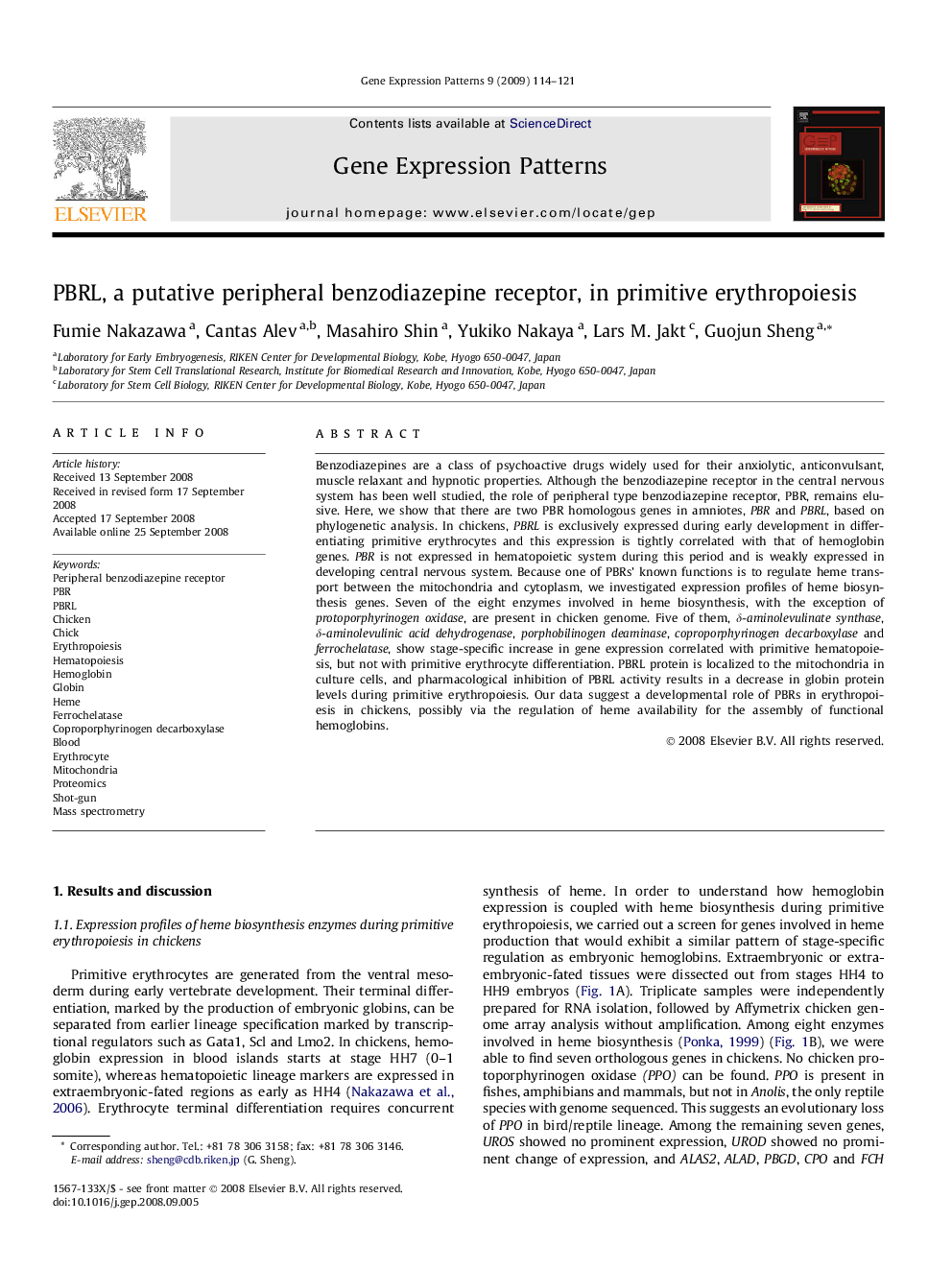| Article ID | Journal | Published Year | Pages | File Type |
|---|---|---|---|---|
| 2182130 | Gene Expression Patterns | 2009 | 8 Pages |
Benzodiazepines are a class of psychoactive drugs widely used for their anxiolytic, anticonvulsant, muscle relaxant and hypnotic properties. Although the benzodiazepine receptor in the central nervous system has been well studied, the role of peripheral type benzodiazepine receptor, PBR, remains elusive. Here, we show that there are two PBR homologous genes in amniotes, PBR and PBRL, based on phylogenetic analysis. In chickens, PBRL is exclusively expressed during early development in differentiating primitive erythrocytes and this expression is tightly correlated with that of hemoglobin genes. PBR is not expressed in hematopoietic system during this period and is weakly expressed in developing central nervous system. Because one of PBRs’ known functions is to regulate heme transport between the mitochondria and cytoplasm, we investigated expression profiles of heme biosynthesis genes. Seven of the eight enzymes involved in heme biosynthesis, with the exception of protoporphyrinogen oxidase, are present in chicken genome. Five of them, δ-aminolevulinate synthase, δ-aminolevulinic acid dehydrogenase, porphobilinogen deaminase, coproporphyrinogen decarboxylase and ferrochelatase, show stage-specific increase in gene expression correlated with primitive hematopoiesis, but not with primitive erythrocyte differentiation. PBRL protein is localized to the mitochondria in culture cells, and pharmacological inhibition of PBRL activity results in a decrease in globin protein levels during primitive erythropoiesis. Our data suggest a developmental role of PBRs in erythropoiesis in chickens, possibly via the regulation of heme availability for the assembly of functional hemoglobins.
